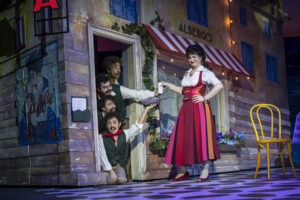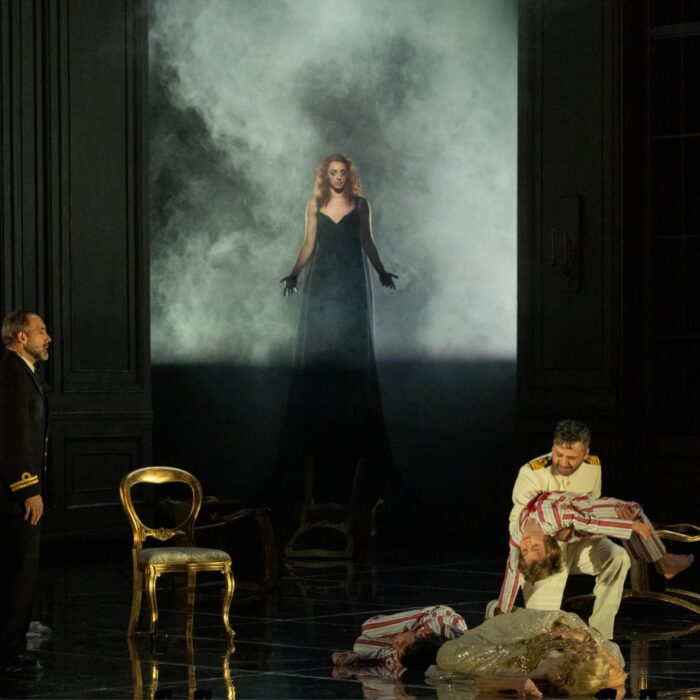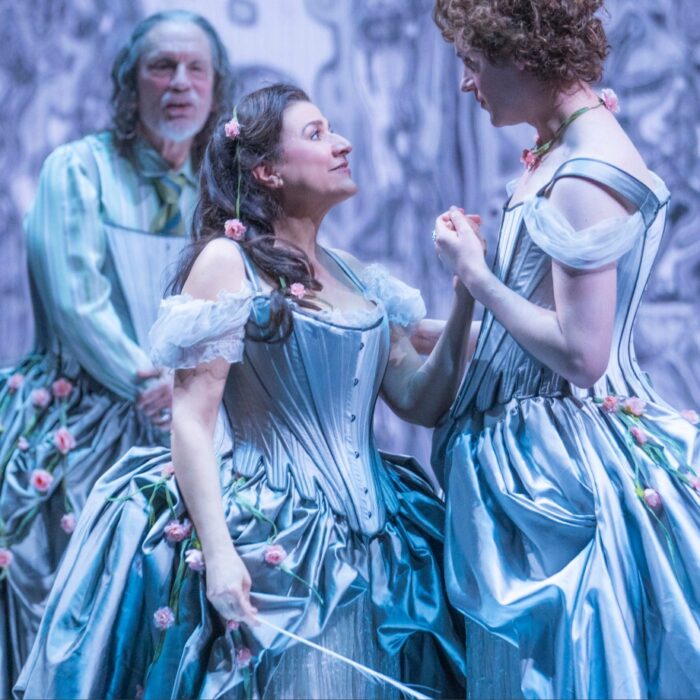
Chicago Opera Theater 2018-19 Season – Il Pigmalione / Rita: Donizetti Donizetti Double Bill Is A Masterclass in Composition
By Marjorie M. RuscheEditor’s Note: You may notice that we previously published a review on this double bill recently. This is another perspective on the same production for your enjoyment and Insight.
The Chicago Opera Theater’s April 14, 20, and 22 double-bill presentation at the Studebaker Theater of “Il Pigmalione” and “Rita,” Donizetti’s first and last operas gave the listener a masterclass in music composition.
Both of these operas received stellar musical performances under the secure baton of Francesco Milioto, who intelligently guided the singers and orchestra through the subtle ebb and flow of the music.
Pigmalione
Particularly in the first work presented, “Il Pigmalione,” the responsive orchestra (two flutes, two oboes, two clarinets, two bassoons, two french horns, two trumpets, timpani, five Violins I, four Violins II, three Violas, three Cellos and one bass) greatly expanded the emotional shadings of the tenor’s arioso. In Donizetti’s first opera, and as usual with beginning composition students, several ideas and various emotions are presented fairly quickly with limited transition material, making for a stock phrase chunk, chunk, chunk type of compositional process. The composition needs more sustained musical development. The proportions of singing and stage time are heavily weighted in Pigmalione’s favor. On stage alone during the opening 30 minutes, the tenor was given quite a structural challenge to sustain interest in his fate. Tenor Javier Abreu did so and was greatly aided by the orchestra’s performance. He was equally balanced with soprano Angela Mortellaro, his Galatea, in beauty and weight of tone quality and did a terrific job with this first operatic venture of Donizetti’s.
As usual with Chicago Opera Theater, the production’s overall visual design was excellent. The double bill featured scenic design by William Boles, costume design by Shanna Foster, wig and makeup design by Becky Scott, lighting design by Ted Nazarowski and projection design by John Boesche. In “Il Pigmalione,” current moving images were fused with classical stage sets. Projections on the stage gave life to static stage elements. One projection, blinking eyes, reminded me of an installation in Millennium Park. The use of projected images was sometimes intriguing, and sometimes stole focus from the singer on the stage.
Rita
“Rita,” Donizetti’s final comic one-act opera, shows the composer with mature command of his craft and the full flowering of his melodic gift. “Rita, ou Le mari battu (Rita, or The Beaten Husband)” with a French libretto by Gustave Vaez was never performed during Donizetti’s lifetime. With commedia dell’arte influences and originally set during the 18th century, Rita premiered posthumously at the Opéra-Comique in Paris on May 7, 1860. Although not a great success at the time and only sporadically performed in the 100 years following its premiere, it was revived and warmly received first in Rome in 1955 and then at the Piccola Scala in Milan in 1965. In the ensuing 50 years, “Rita (both in the original French and its Italian translation)” has become one of Donizetti’s most frequently performed operas. Rita (again soprano Angela Mortellaro) Beppe (again Javier Abreu) and Gasparo, baritone Keith Phares, all flourished with the chance for greater bel canto vocal virtuosity in this work. Solos, duets, and ensembles received much more expansion in this final opera. A farce with a subtext of spousal abuse, Rita, initially fully in command of herself and pleased with her life, receives a shock when her first husband (presumed dead in a shipwreck) shows up at the café she owns and runs with the help of her beleaguered husband, Beppe. After a series of misunderstandings among the three characters, all is resolved when Gasparo leaves for America and Rita and Beppe decide to stop their power struggle and live in peace and harmony.
Stage Craft
Once again the orchestra both fluidly supported and intensified the vocal colorings of the singers. The staging, by Amy Hutchison, was highly inventive but sometimes distracted from the opera’s musical pacing. Particularly in “Rita,” the directorial interpolations into the score stopped the forward momentum of the opera. One innovative episode that was more in sync with the overall musical pacing was when Beppe ascended to the blue sky while singing about birds. Brave on the tenor’s part to sing while being hoisted off the floor and then climb down a ladder supplied by auxiliary clowns, dressed in the same costume as Beppe. Coached by Adrian Danzig, these Beppe clones mimicked and exaggerated Beppe’s reactions at points during the opera. Both works (one serious, one a farce) grapple with themes of love and illusion. The antics of clowns on and off the stage helped the audience transition from one opera to the next. Paired as a double-bill “Il Pigmalione” and “Rita” made an entertaining and informative program.


